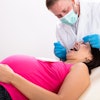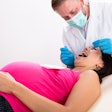A new luciferase immunoprecipitation system could be used to quickly test patients for Sjögren's syndrome, researchers reported in the Journal of Translational Medicine (JTM, September 2009 Vol. 7:83).
In Sjögren's syndrome, the patient's own immune system attacks the salivary and tear glands, and patients with Sjögren's present in dental offices most typically with dry mouth. Making a definitive diagnosis can be difficult, and some research suggests most dentists overlook it.
Researchers at the University of Florida and the National Institute of Dental and Craniofacial Research, Bethesda, MD, are trying to develop an assay that dentists and other clinicians could use to quickly and easily identify antibodies associated with Sjögren's, according to the JTM paper.
Autoimmune disorders require more sensitive tests than tests for infections so the researchers used a non-radioactive, luciferase enzyme-based tracer in a liquid phase assay. They tested the blood of 57 Sjögren's patients and 25 control subjects.
Testing for anti-La autoantibodies showed 49% sensitivity and 96% specificity (using a cutoff of the mean plus five standard deviations). Testing for anti-Ro60 and anti-Ro52 autoantibodies, showed 56% sensitivity and 100% specificity.
They repeated the experiment on a Ro52 autoantibody using a new cohort of 105 patients and 30 control subjects, which showed 66% sensitivity and 100% specificity.
These results suggest the system is more accurate than existing immunoassays for Sjögren's the researchers said.
The test, which they refer to as a quick version of luciferase immunoprecipitation systems, could be used at point of care because it requires only about 25 minutes of total processing time per 94 sera samples, including five minute set-up, two five-minute incubations steps, 10 minutes of washing, followed by reading the plate with a luminometer, the investigators wrote.
The technique could be incorporated into a device that might also detect antibodies for other conditions such as HIV infection, they added, noting that two of the authors have applied for a patent.















